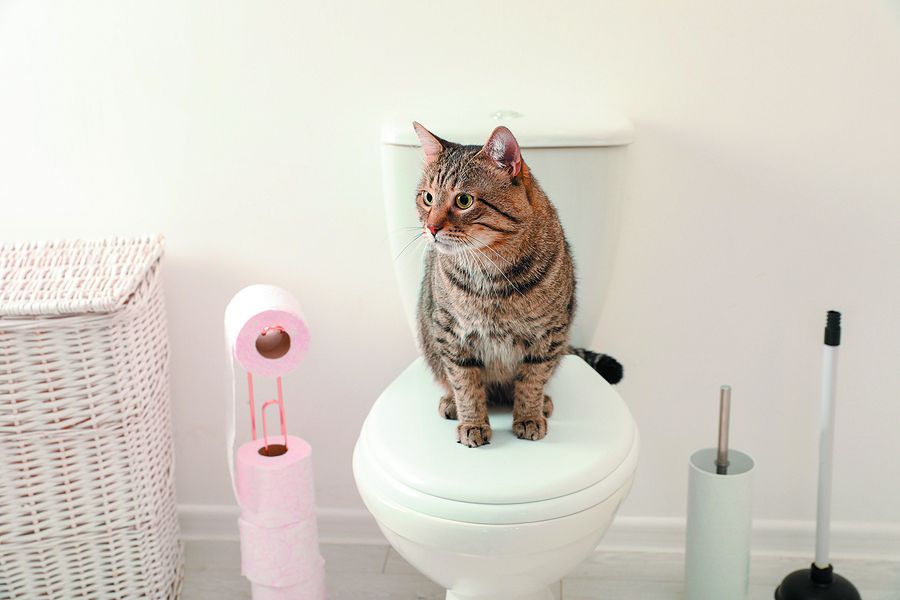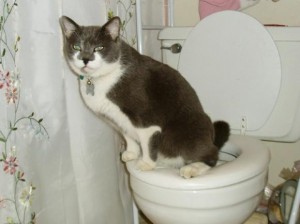Hazards of Flushing Cat Poop Down Your Toilet - Avoid Potential Problems
Hazards of Flushing Cat Poop Down Your Toilet - Avoid Potential Problems
Blog Article
Were you trying to locate resources around How to Dispose of Cat Poop and Litter Without Plastic Bags?

Intro
As feline proprietors, it's vital to bear in mind exactly how we deal with our feline pals' waste. While it might seem practical to flush pet cat poop down the bathroom, this practice can have damaging effects for both the setting and human health.
Ecological Impact
Flushing feline poop presents hazardous microorganisms and parasites right into the water, posturing a considerable risk to aquatic ecosystems. These pollutants can adversely impact aquatic life and concession water high quality.
Health Risks
In addition to environmental concerns, flushing pet cat waste can additionally present health threats to people. Feline feces may consist of Toxoplasma gondii, a parasite that can create toxoplasmosis-- a potentially extreme health problem, specifically for pregnant females and individuals with damaged immune systems.
Alternatives to Flushing
Fortunately, there are safer and more accountable ways to throw away cat poop. Consider the complying with alternatives:
1. Scoop and Dispose in Trash
One of the most typical technique of throwing away pet cat poop is to scoop it into an eco-friendly bag and toss it in the trash. Make sure to use a devoted trash scoop and dispose of the waste promptly.
2. Use Biodegradable Litter
Select naturally degradable cat litter made from products such as corn or wheat. These litters are environmentally friendly and can be safely taken care of in the trash.
3. Hide in the Yard
If you have a lawn, consider burying feline waste in an assigned area far from veggie yards and water resources. Make sure to dig deep adequate to prevent contamination of groundwater.
4. Set Up a Pet Waste Disposal System
Purchase a pet dog waste disposal system particularly designed for pet cat waste. These systems use enzymes to break down the waste, decreasing smell and environmental impact.
Conclusion
Responsible family pet possession prolongs past providing food and sanctuary-- it additionally involves appropriate waste management. By avoiding flushing cat poop down the commode and choosing different disposal methods, we can lessen our ecological footprint and protect human health.
CAN I FLUSH MY CAT'S POOP DOWN THE TOILET?
Always avoid flushing cat poop down the drain because not only could it potentially contain harmful parasites called toxoplasmosis, the litter could sit in your line and lead to a clog.
Plenty of waste gets flushed down your toilet every day, so what harm could a little cat poop and cat litter do? The answer is a lot, which is why you never want to send it down your drains.
Can I Flush My Cat's Poop Down The Toilet?One of the biggest problems with flushing your cat’s presents is the harmful parasites in your feline’s stool called toxoplasmosis. Extremely dangerous for humans, especially pregnant women and people who are immunocompromised, these parasites can cause a multitude of problems for unborn babies and even cause death or miscarriage if the infection happens early. That’s why you should always avoid touching cat poop. Also, water systems are not equipped to handle toxoplasmosis and are unable to destroy the parasite before it’s sent back into the environment, potentially jeopardizing the health of local area wildlife, specifically marine life.
Flushing cat poop could also lead to a future drain clog. Try as you may to eliminate any litter from it, there will always still be some stuck on there – and even if it says flushable on the label, it’s not! Cat litter is made up of bentonite clay, which has the tendency to harden when wet, creating a thick, almost cement-like quality. Cat litter that ends up down the drain can expand from the moisture in the pipes and then harden, blocking any wastewater. If you have a septic tank or a cesspool, it cannot handle cat litter either, no matter what kind. If it solidifies in the tank, in any of the system’s major parts like the inlet baffle, it’ll create some expensive problems.
The best way to dispose of cat poop safely is to scoop it into a bag and throw it into the trash – and ways of dealing with the smell include adding baking soda and replacing the box more.
Now that we’ve explained the potential harm that flushing cat poop can cause to you and your drains, you might be wondering the best way of dealing with it. Unfortunately, it’s the old-fashioned way of scooping it into a bag and then placing it into a trash can. They also make pet-proof trash cans that lock in the smell, so that you don’t have to always immediately take it out. If you’re tired of smelling the litter box after even just one use from your feline, there’s things you can do to help combat that smell. Adding baking soda to the litter will reduce smells, but just don’t add too much or your cat will no longer want to use the box. You could also replace the box more frequently, at least once a year, as those smells can just seep inside the scratch marks. Lastly, try changing to a new litter formula – some are better with smells than others.

I recently found that blog post about How to Dispose of Cat Poop and Litter Without Plastic Bags when doing a lookup on the web. Sharing is good. Helping others is fun. Kudos for your time. Please stop by our blog back soon.
Booking Page Report this page